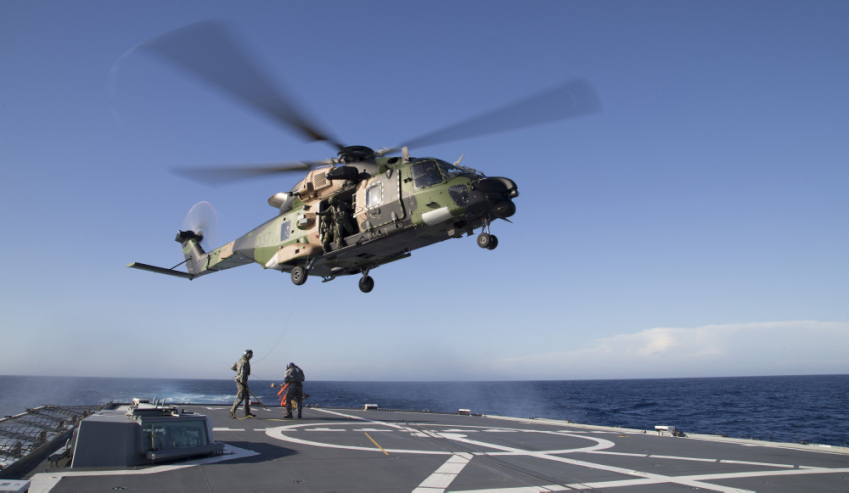Australia’s MRH90 aircraft manufacturer has finally released repair recommendations following the aircraft’s latest incident aboard LHD HMAS Canberra earlier this year.
To continue reading the rest of this article, please log in.
Create free account to get unlimited news articles and more!
The Department of Defence has told Defence Connect that Airbus Group Australia Pacific and the original equipment manufacturer Australian Aerospace (an Airbus Helicopters subsidiary) have released recommendations relating to repairs for the aircraft.
"The original equipment manufacturer (OEM) has now released a recommended service bulletin that identifies actions at the next appropriate repair event or overhaul," a Defence spokesperson said.
"Defence has sought advice from Airbus Group Australia Pacific and the OEM on incorporating the recommended service bulletin at the most appropriate time and has also engaged with Commonwealth airworthiness staff for advice."
The MRH90 Taipan incident earlier this year saw excessive updrafts of wind coming up the side of the ship during the helicopter shutdown process, causing the helicopter blades to act erratically leading to unfavourable blade orientation.
Other incidents have also occurred across the world fleet. The Royal New Zealand Air Force's NH90 fleet was grounded following an in-flight single engine failure, which forced an emergency landing, in April this year. In 2012, a flaw revealed the NH90 could not be flown in snowy conditions.
Senate estimates in June this year revealed, despite the immense similarities between the MRH90 and NH90 aircraft, no inspections had been carried out on Australia's aircraft in relation to the issues facing the NH90 fleet.
"We follow the advice from the OEM, the original equipment manufacturer, and at this stage we haven't commenced those inspections," Director General Army Aviation Systems Jeremy King told Senate estimates in June.
Chief of Navy Vice Admiral Tim Barrett also discussed other incidents involving the Taipan aircraft.
“There had been three incidents — I think it is three, I can confirm the number — where those blades have exceeded what we would normally consider to be relevant engineering limits," VADM Barrett said.
The aircraft is no stranger to controversy, as the MRH90 program stopped accepting aircraft in November 2010 due to a number of technical and reliability issues.
The Commonwealth recommenced accepting aircraft in November 2011 after negotiating a remediation plan to address a number of engineering and reliability issues, however acceptance of aircraft was again suspended in February 2012 pending resolution of another technical concern related to the aircraft’s cargo hook.
In May 2012, Australia agreed to accept a further four aircraft based on Australian Aerospace's agreement to the commercial terms associated with the rectification of the cargo hook issue.
Initial operational capability for both the Navy and Army's MRH90 aircraft was expected in July 2010 and April 2011, but delays to initial materiel release resulted in IOC only being reached in 2014.
Final materiel release for both Army and Navy is expected in December this year and final operational capability is expected in July 2019, a five-year delay from initial forecasts.
The project was added to Defence's Projects of Concern list in 2011.
Australia bought the Taipan fleet at a cost of $4 billion to replace the ageing Black Hawk and Sea King helicopters, but Army will still have to operate its Black Hawks until at least 2018.

 Login
Login







